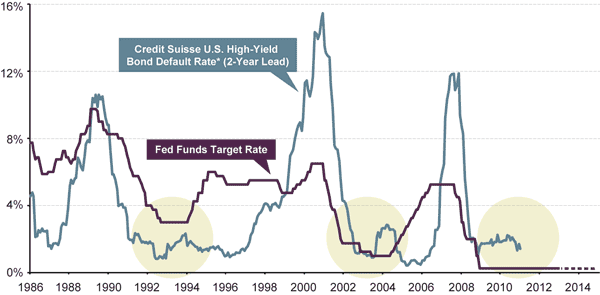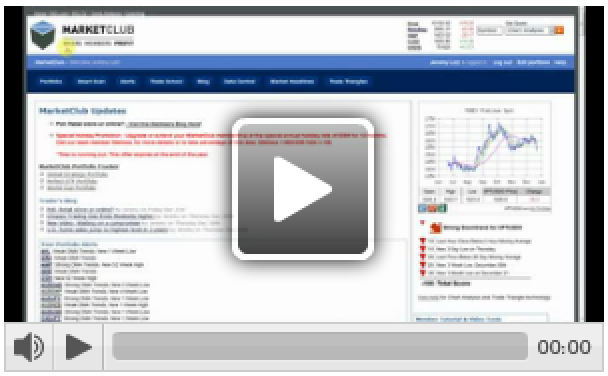Echoes of 2004 (Minerd)
 Printer-friendly Version
Printer-friendly Version
« Canada’s Housing Market is at a Turning Point? (FT.com) ~|~ Technical Talk: Weekly SPDR Select Sector Review »
Tweet
Email This Article

Echoes of 2004
by Scott Minerd, CIO, Guggenheim Partners LLC
“The current environment bears a number of similarities to 2004. Asset prices have recovered from the losses incurred in the preceding recession, and credit spreads are about where they were nine years ago. From 2004 to 2007, spreads came in as economic expansion continued. Along the way, there were several major setbacks, such as the period in 2005 when rates backed up severely. There is a risk that a similar period of volatility may occur again, however, spreads should continue to ratchet in, overall.
Also reminiscent of 2004, equity markets will continue to benefit from easy monetary conditions. With the recovery in corporate earnings now less robust, share prices in the U.S. are unlikely to rise as dramatically as they have over the previous three years. That said, investors can expect further domestic equity appreciation, with a possible gain of up to 35% for the Dow Jones Industrial Average by the end of 2015. Asian and European bourses appear as though they will outperform the U.S. in the years ahead. The trend of liquidity-induced multiple expansion in stocks and further credit spread tightening for certain areas of the fixed income market is unlikely to abate for as long as yields on 10-year Treasuries remain below 4%.”
Economic Data Releases
Headline GDP Weak, But Core Components Solid, Payrolls Up With Large Revisions
- U.S. GDP shrank 0.1% in the fourth quarter, led by a 6.6% annualized decrease in government outlays and a slowdown in inventory accumulation. Core components were strong, as both consumer spending and private fixed investment expanded at the fastest pace in three quarters.
- Personal income grew 2.6% in December, the most in eight years, driven by the surge in dividend income, as companies made special distributions in the face of the tax uncertainty.
- U.S. non-farm payrolls rose 157,000 in January, with the prior two months revised up by 127,000. The annual benchmark revision added another 424,000 jobs for the twelve months through March 2012.
- U.S. unemployment rate rose to 7.9% in January, driven by the increase in unemployed people in the household survey.
- Initial jobless claims rose to 368,000 last week, as the four-week moving average remained unchanged at 352,000.
- The ISM Manufacturing PMI jumped to a nine-month high of 53.1 in January. The ISM Services Index decreased to 55.2 from 55.7 in December, still the second-highest reading in eleven months.
- University of Michigan consumer confidence in January rose to 73.8 from 72.9 in December after revision.
PMIs Show Contraction Slowing in Europe as Confidence Improves, China Remains in Expansion
- Eurozone manufacturing PMI rose to 47.9 in January after revision, the highest since March of last year. Germany’s revised manufacturing PMI also reached an eleven-month high of 49.8, while France’s remained at the lowest since April 2009.
- The pace of contraction in eurozone service industries continued to slow in January, as the eurozone service PMI rebounded to a ten-month high of 48.6.
- Eurozone consumer confidence increased to -23.9 in January, the highest since July. Economic confidence also increased to a seven-month high.
- Retail sales in the eurozone fell 0.8% in December, after gaining in November.
- The German unemployment rate returned to a 20-year low of 6.8% in January. Retail sales dropped 1.7% in December.
- Spain’s preliminary fourth quarter GDP reading showed a 0.7% decline from the third quarter, the sixth consecutive quarter of contraction.
- China’s official manufacturing PMI unexpectedly declined, but remained in expansion at 50.4, while the HSBC manufacturing PMI showed an accelerating expansion.
- China’s non-manufacturing PMI for January showed the fastest pace of expansion since August at 56.2.
Chart of the Week
U.S. High-Yield Bond Default Rate vs. the Federal Fund Target Rate
Despite a temporary spike in 2005, the U.S. high-yield bond default rate has, historically, tracked the federal funds target rate closely, with a lag of approximately two years. Given the Federal Reserve’s efforts to maintain a low interest rate environment for an extended period of time, high-yield default rates should remain depressed, which is supportive of credit spreads.

Source: Credit Suisse, Bloomberg, Guggenheim Investments. Data as of 1/31/2013. *Note: The high-yield bond default rate is trailing 12-month based.
This article is distributed for informational purposes only and should not be considered as investing advice or a recommendation of any particular security, strategy or investment product. This article contains opinions of the author but not necessarily those of Guggenheim Partners or its subsidiaries. The author’s opinions are subject to change without notice. Forward looking statements, estimates, and certain information contained herein are based upon proprietary and non-proprietary research and other sources. Information contained herein has been obtained from sources believed to be reliable, but are not assured as to accuracy. No part of this article may be reproduced in any form, or referred to in any other publication, without express written permission of Guggenheim Partners, LLC. ©2013, Guggenheim Partners. Past performance is not indicative of future results. There is neither representation nor warranty as to the current accuracy of, nor liability for, decisions based on such information.
Copyright © Guggenheim Partners LLC

Latest AdvisorAnalyst Stories
Read more from the author/contributor here.
Tags: minerd
Posted in Markets| Comments Off






